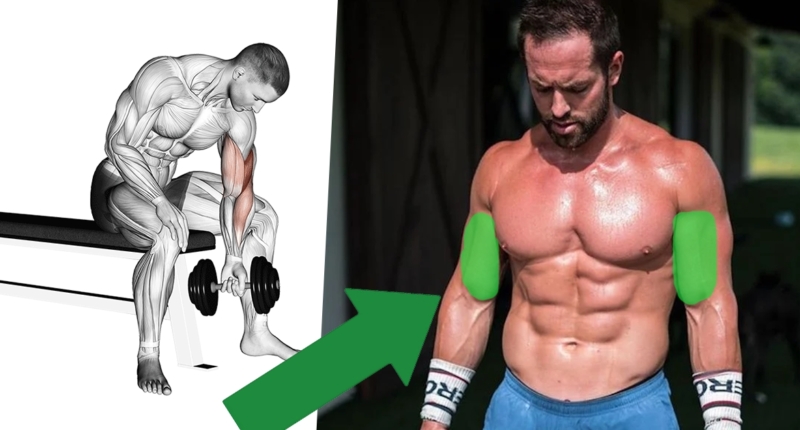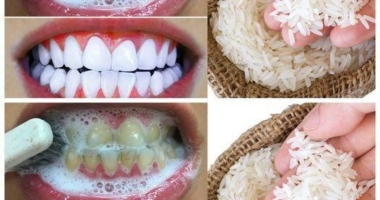Sleep, protein, and macronutrients are all essential for muscle growth and repair. During sleep, the body repairs and regenerates tissues, including muscle tissue that has been damaged during exercise. Hormone production, protein synthesis, energy restoration, and mental and physical performance are all enhanced during restful sleep, leading to more effective workouts and better muscle growth over time. Protein is the building block for muscle tissue and plays a crucial role in muscle growth and repair, as it stimulates muscle protein synthesis, prevents muscle breakdown, and reduces muscle soreness. Carbohydrates and fats are also essential macronutrients required by the body in the right proportions to maintain good health and prevent disease. Understanding the importance of proper nutrition and sleep is key to achieving fitness goals and promoting muscle growth and overall health.
The Importance of Strong Arms and the Muscles Involved
Strong arms are not just aesthetically pleasing, but they also serve various functions that can benefit us in many areas of life. Strong arms can make everyday tasks easier, help with sports and fitness activities, maintain good posture and balance, prevent injuries, aid in rehabilitation, and allow us to maintain independence and quality of life as we age. In this article, we will discuss the muscles involved in the arms and provide science-based dumbbell exercises to build bigger biceps.
Muscles of the Arms
The muscles of the arms can be divided into two main groups: the muscles of the upper arm and the muscles of the forearm. The muscles of the upper arm include the biceps brachii, brachialis, and triceps brachii. The biceps brachii is responsible for flexing the elbow and rotating the forearm. The brachialis muscle is located beneath the biceps and is responsible for flexing the elbow. The triceps brachii muscle is located on the back of the upper arm and is responsible for extending the elbow.

The muscles of the forearm include the flexor carpi radialis, flexor carpi ulnaris, extensor carpi radialis, extensor carpi ulnaris, pronator teres, and supinator. The flexor carpi radialis muscle is located on the inner side of the forearm and is responsible for flexing the wrist and abducting the hand. The flexor carpi ulnaris muscle is located on the outer side of the forearm and is responsible for flexing the wrist and adducting the hand. The extensor carpi radialis muscle is located on the back of the forearm and is responsible for extending the wrist and abducting the hand. The extensor carpi ulnaris muscle is located on the back of the forearm and is responsible for extending the wrist and adducting the hand. The pronator teres muscle is located on the inner side of the forearm and is responsible for pronating the forearm. The supinator muscle is located on the outer side of the forearm and is responsible for supinating the forearm.
Dumbbell Exercises for Bigger Biceps
Dumbbells are a great tool to use when targeting the muscles in the upper arm. Here are some science-based dumbbell exercises to build bigger biceps:
-
Dumbbell curls: Stand with your feet shoulder-width apart, and hold a dumbbell in each hand with your palms facing forward. Slowly lift the dumbbells towards your shoulders, keeping your elbows close to your sides. Pause at the top of the movement and slowly lower the dumbbells back to the starting position.
-
Hammer curls: Stand with your feet shoulder-width apart, and hold a dumbbell in each hand with your palms facing your body. Slowly lift the dumbbells towards your shoulders, keeping your elbows close to your sides. Pause at the top of the movement and slowly lower the dumbbells back to the starting position.
-
Concentration curls: Sit on a bench with your legs spread apart, and hold a dumbbell in one hand. Place your elbow on the inside of your thigh, and slowly lift the dumbbell towards your shoulder. Pause at the top of the movement and slowly lower the dumbbell back to the starting position.
-
Preacher curls: Stand with your feet shoulder-width apart, and place your upper arms on a preacher bench. Hold a dumbbell in each hand with your palms facing upward, and slowly lift the dumbbells towards your shoulders. Pause at the top of the movement and slowly lower the dumbbells back to the starting position.
-
Incline dumbbell curls: Lie on an
The Importance of Macronutrients and Protein for Muscle Growth
Macronutrients are nutrients that are required by the body in large amounts to provide energy and support growth, development, and overall health. The three main macronutrients are carbohydrates, proteins, and fats. Carbohydrates are the body’s primary source of energy, while fats are important for many functions, including the absorption of vitamins and the production of hormones. Proteins, on the other hand, are essential for the growth and repair of tissues in the body.
What Does Protein Do for Muscle Growth?
Protein plays a crucial role in muscle growth and repair. When we exercise, we create microscopic tears in our muscle fibers, and protein is required to repair and rebuild these fibers. Proteins are made up of amino acids, which are the building blocks of muscle tissue. When we consume protein, our bodies break it down into amino acids, which are used to repair and rebuild muscle fibers.
Muscle protein synthesis is the process by which new muscle tissue is created. Consuming protein after exercise has been shown to increase muscle protein synthesis, which can lead to increased muscle growth over time. Protein also helps to prevent muscle breakdown by providing the amino acids needed for repair and growth. Consuming protein after exercise has been shown to help reduce muscle soreness, which can improve recovery time and allow for more frequent and intense workouts.
Importance of a Balanced Diet
The body needs a balance of these macronutrients to function properly. A balanced diet that includes all three macronutrients in the right proportions is important for maintaining good health and preventing disease. While protein is essential for muscle growth and repair, it is important to ensure that we are also consuming enough carbohydrates and fats.
About Jeremy Ethier
Jeremy Ethier is a fitness YouTuber and personal trainer who creates content focused on evidence-based fitness and nutrition. He has a Bachelor of Science degree in Kinesiology and Health Sciences and a Master’s degree in Rehabilitation Science from the University of Toronto.
Proper nutrition is key to achieving fitness goals, and Jeremy Ethier is one of the many experts who stresses the importance of macronutrients and protein for muscle growth. By consuming a balanced diet that includes all three macronutrients, and ensuring adequate protein intake, we can support muscle growth and overall health.
The Importance of Sleep for Muscle Growth
Getting adequate sleep is crucial for muscle growth and repair. During sleep, the body repairs and regenerates tissues, including muscle tissue that has been damaged during exercise. This repair process helps to promote muscle growth and recovery. Sleep also plays a crucial role in hormone production, including the production of growth hormone, which is important for muscle growth and repair.
Additionally, during sleep, the body produces protein, which is used to repair and rebuild muscle tissue. This protein synthesis process is important for muscle growth and repair. Sleep helps to restore energy levels, which is important for muscle growth and recovery. When we are sleep-deprived, our bodies may not have enough energy to support muscle growth and repair.
Getting enough sleep also helps to improve mental and physical performance, which can lead to more effective workouts and better muscle growth over time. In summary, sleep is essential for muscle growth and repair, as it allows the body to repair and regenerate muscle tissue, produce hormones, synthesize protein, restore energy levels, and improve mental and physical performance.
Don’t miss interesting posts on Famousbio









